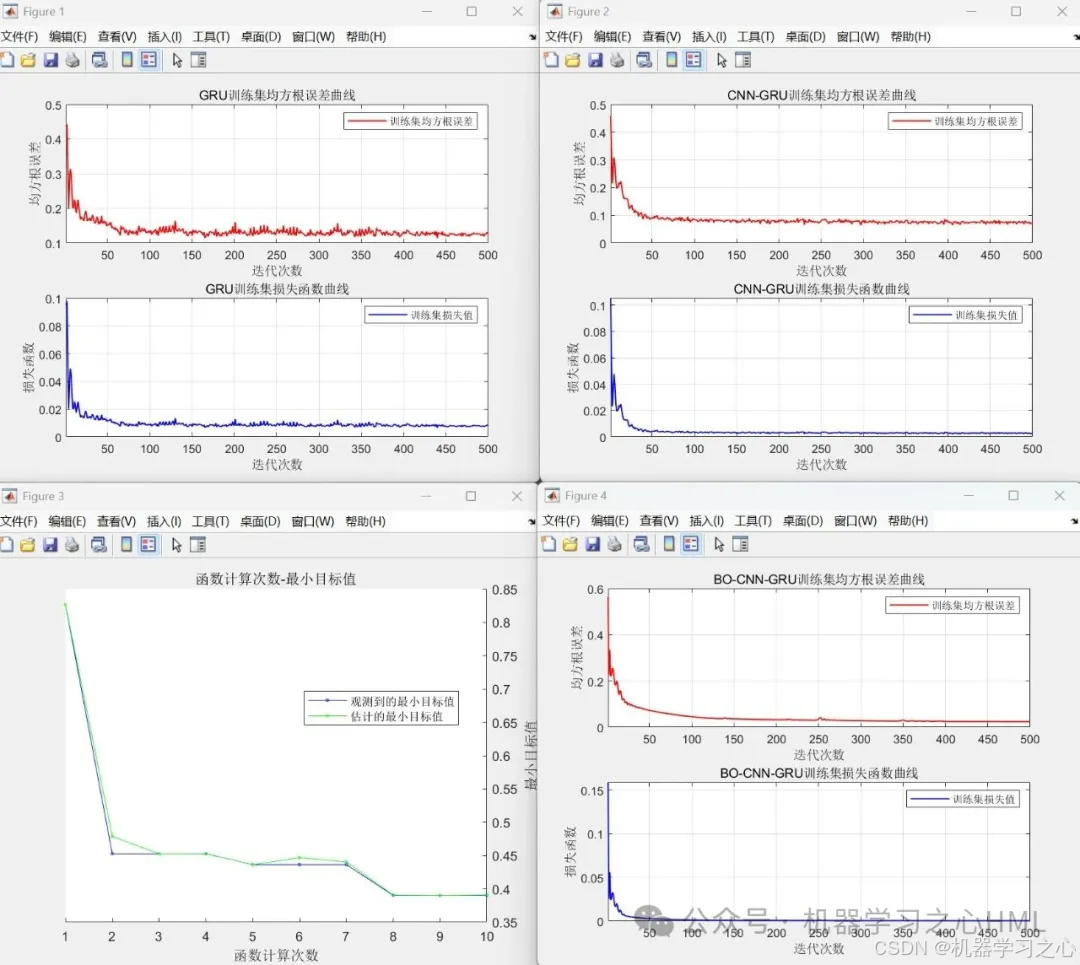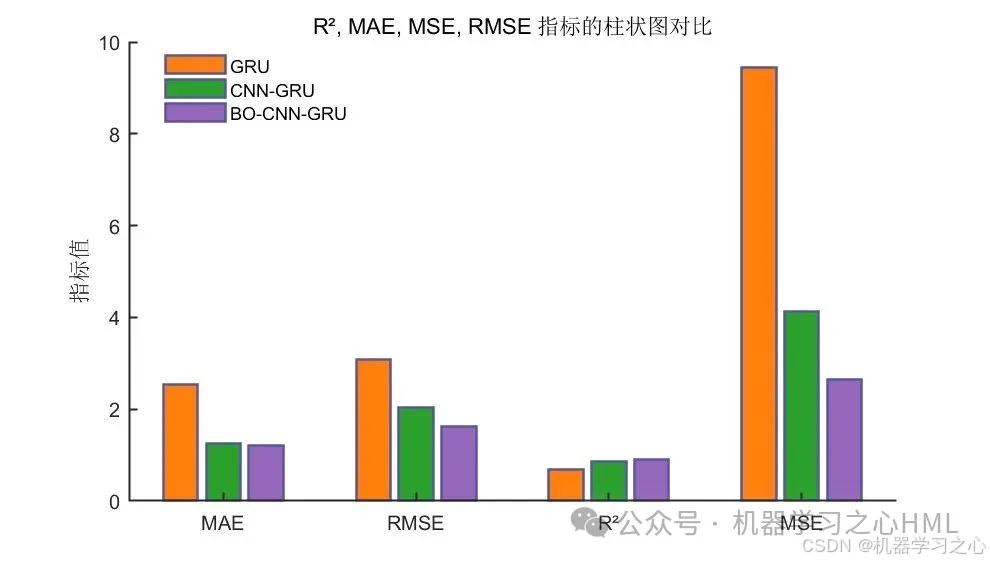三种深度学习模型(GRU、CNN-GRU、贝叶斯优化的CNN-GRU/BO-CNN-GRU)对北半球光伏数据进行时间序列预测
代码功能
该代码实现了一个光伏发电量预测系统,采用三种深度学习模型(GRU、CNN-GRU、贝叶斯优化的CNN-GRU/BO-CNN-GRU)对北半球光伏数据进行时间序列预测对北半球光伏数据进行时间序列预测,并通过多维度评估指标和可视化对比模型性能。
算法步骤
1. 数据预处理
- 数据导入:从Excel读取北半球光伏数据
- 序列重构
构建时间窗口:用前4步预测下一步 - 数据集划分:70%训练集,30%测试集
- 归一化:采用
mapminmax归一化到[0,1]区间 - 数据平铺:转换为LSTM需要的序列格式
2. 模型构建
① GRU模型
② CNN-GRU模型
③ BO-CNN-GRU模型
- 贝叶斯优化超参数:
-GRU单元数- 初始学习率
- L2正则化系数
3. 模型训练
- 通用设置:
- 优化器:Adam
- 最大迭代次数:500
- 学习率策略:每400次衰减为0.1倍
- 正则化:L2权重衰减
- 训练过程监控:记录训练损失和RMSE
4. 预测与反归一化
t_sim = predict(net, Lp_test); T_sim = mapminmax(\'reverse\', t_sim, ps_output); % 反归一化5. 评估与可视化
- 评估指标:RMSE、MAE、MAPE、R²、MSE
- 可视化对比:
- 预测值 vs 真实值曲线
- 误差分布柱状图
- 雷达图/罗盘图多指标对比
- 二维散点图(R² vs MAPE)
- 柱状图指标对比
关键参数设定
num_sizeMaxEpochsGRU UnitsCNN FiltersDrop FactorDrop Period运行环境要求
MATLAB版本:R2021a或更高
应用场景
- 光伏发电预测:
- 电网调度与能源管理
- 电站运维决策支持
- 时间序列预测:
- 电力负荷预测
- 气象数据预测
- 金融时间序列分析
- 模型对比研究:
- LSTM vs CNN-LSTM架构性能对比
- 贝叶斯优化效果验证
创新点总结
- 三级模型架构:
GRU→ CNN-GRU → BO-CNN-GRU渐进式优化 - 多维度评估体系:
- 5种量化指标(RMSE/R²/MAE/MAPE/MSE)
- 6种可视化对比(曲线/雷达/罗盘/柱状/散点/误差图)
- 贝叶斯自动调参:
优化神经网络超参数组合
注:实际运行时需确保:
北半球光伏数据.xlsx文件在路径中- 自定义函数(
fical.m,radarChart.m)已实现







